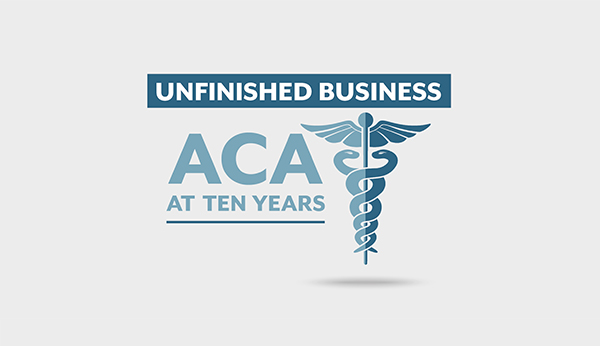
ACA at 10 Years: Medicaid Expansion in Colorado
This is due in large part to Colorado’s decision to expand Medicaid in 2013.
The expansion of Medicaid means more people are able to access affordable health insurance when they need it most. In 2019, more than 380,000 of the 1.3 million Coloradans who were enrolled in Medicaid were covered because of expansion. This accounts for the entire decline in the uninsured population seen between 2013 and 2015, according to the Colorado Health Access Survey (CHAS).
Before the ACA took effect, Medicaid in Colorado covered parents with incomes up to 60 percent of the federal poverty level (FPL) and children in households with incomes up to 147 percent. As part of the ACA, the federal government provided financial incentives for states to expand Medicaid coverage to nearly all adults with incomes up to 138 percent of the FPL (about $17,608 annually for a single person or $36,156 for a family of four), including those without children. Colorado opted to expand Medicaid in 2013, making it one of 37 states that have expanded the program as of early 2020.
The newly eligible under Medicaid expansion weren’t the only ones who got covered. Some people also enrolled as a result of a phenomenon known as the “welcome mat” effect. These Coloradans would have been eligible for Medicaid under pre-expansion guidelines but enrolled afterword due to the greater awareness provided through expansion and the media coverage surrounding it. In 2015, the Colorado Department of Health Care Policy and Financing (HCPF) estimated that 13 percent of new Medicaid enrollees joined not because of expansion, but due to this “welcome mat” effect. In 2020, about 55,000 residents have coverage due to the “welcome mat."
Altogether, about 8 percent of Colorado’s residents are covered either because of Medicaid expansion or the “welcome mat.”
Despite these substantial gains, in 2019, 361,000 Coloradans were still uninsured. CHI estimates that a quarter of these people (24.3 percent) are eligible for Medicaid. Increasing Medicaid outreach and education and simplifying the enrollment process could increase enrollment among this group. A bill expected in Colorado’s 2020 legislative session would use the tax filing process to identify eligibility and streamline enrollment for Medicaid and other forms of public insurance.
Some low-income Coloradans aren’t eligible for Medicaid. For instance, one in four uninsured Coloradans (24.6 percent) is an immigrant without documentation. This group is currently ineligible for Medicaid except for emergency coverage, which provides support for the most severe medical emergencies.
At the same time, Colorado is now seeing a drop in Medicaid enrollment that began in 2017. Medicaid covers 50,000 fewer Coloradans in 2020 than in 2016. In a recent brief, the Colorado Center on Law & Policy (CCLP) described six possible reasons for this decline. These include promising trends, such as increased employment due to an improving economy. But they also include concerning factors ranging from issues with HCPF’s income verification policy to anti-immigrant sentiment and policies such as the “public charge” rule, which can dissuade residents from enrolling in government insurance, regardless of eligibility or need.
In the decade since the ACA was passed, Colorado has made historic gains in Medicaid coverage and seen significant reductions in the number of Coloradans without insurance. But challenges remain: Not everyone is able to be covered, not everyone who is eligible for Medicaid is covered, and more recent declines in enrollment point to a need for continued attention to the factors that affect Coloradans’ access to this public program.
Next week, CHI will look at enrollment changes in the individual market, including major debates currently happening at the state Capitol over reinsurance and the public option.


